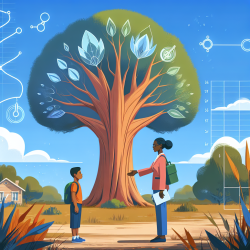Introduction
As practitioners dedicated to improving outcomes for children, we know the importance of leveraging data to drive our decisions. The recently published research on the Tallo database offers a wealth of insights that can be applied to our practice, even if it might seem initially unrelated. By exploring the Tallo database, which captures comprehensive data on tree allometry and crown architecture, we can draw parallels to our work in speech-language pathology, where understanding the structure and dynamics of communication is key.
Understanding the Tallo Database
The Tallo database is a groundbreaking collection of 498,838 georeferenced records of trees from 61,856 sites worldwide. It includes data on stem diameter, height, and crown radius for 5,163 tree species. This vast dataset is invaluable for ecological research, particularly in understanding forest structure, dynamics, and carbon stocks. But how can this relate to our field?
Data-Driven Insights for Practitioners
While the Tallo database is primarily ecological, its data-driven approach offers lessons for speech-language pathologists:
- Comprehensive Data Collection: Just as Tallo gathers extensive data on trees, we can enhance our practice by collecting comprehensive data on each child's communication abilities. This can include speech patterns, language use, and social interactions.
- Standardization: Tallo's taxonomically standardized records ensure consistency across studies. Similarly, using standardized assessments in our practice can provide reliable benchmarks for evaluating progress.
- Global Perspectives: Tallo's global reach reminds us of the importance of considering diverse cultural and linguistic backgrounds in our assessments and interventions.
Encouraging Further Research
The Tallo database exemplifies how collaborative, open-access resources can advance a field. As practitioners, we should advocate for and contribute to similar databases in speech-language pathology. By sharing data and insights, we can collectively improve our understanding and treatment of communication disorders.
Conclusion
The Tallo database is more than just a collection of tree measurements; it's a testament to the power of data in driving research and understanding complex systems. By adopting similar data-driven approaches in our practice, we can enhance our ability to create positive outcomes for children. For those interested in exploring the original research further, I encourage you to read the full paper: Tallo: A global tree allometry and crown architecture database.










